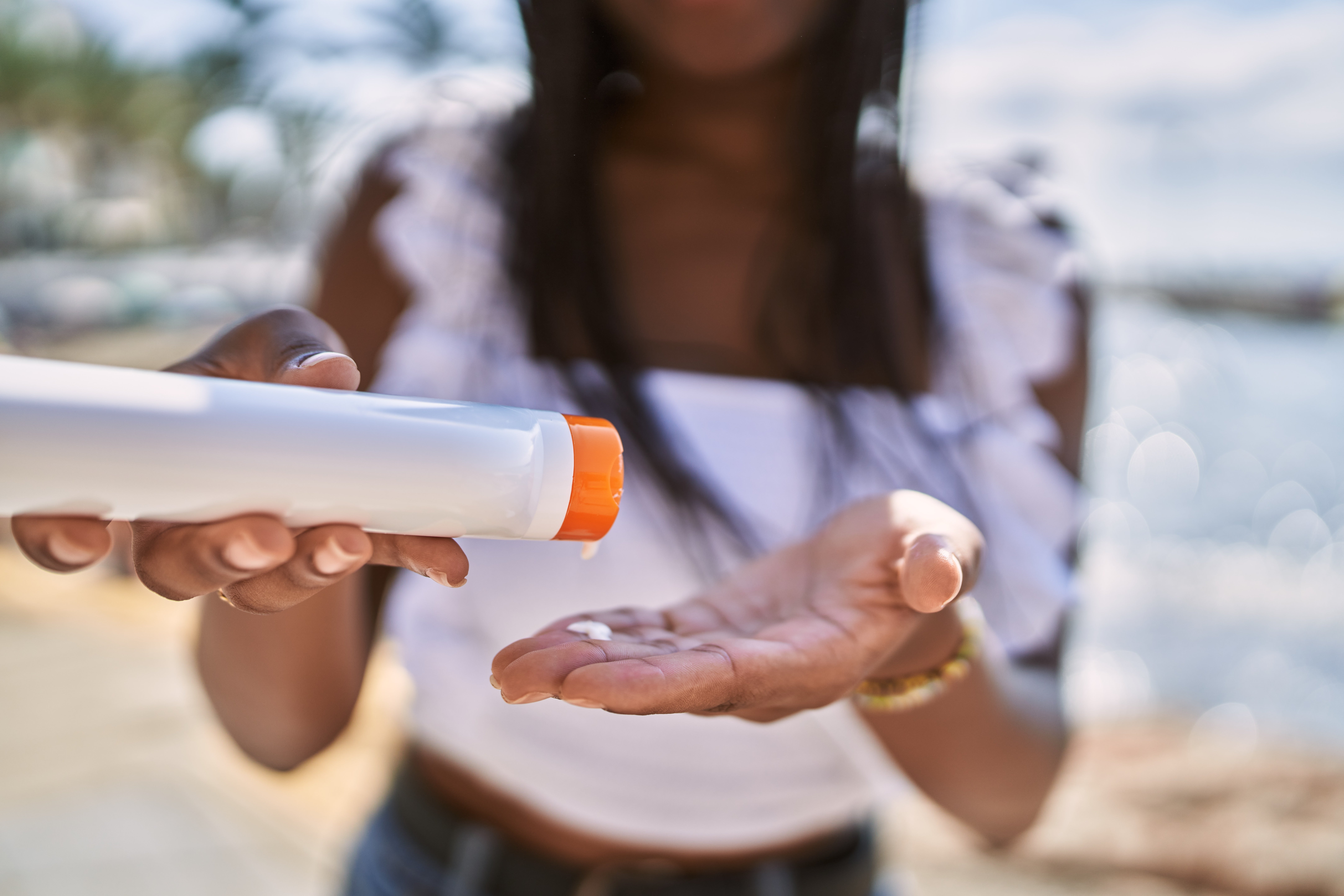Read Before The Rays: BMC Dermatologist Shares Sun Safety Tips

It's summertime; school is out, the beach is open, and the warm weather has arrived. You may find yourself soaking up the sun, and you should- safely. In the United States, skin cancer is the most diagnosed cancer, but the good news is that it is also preventable. BMC's Dr. Debjani Sahni, dermatologist and director of the Cutaneous Oncology Multidisciplinary Program, shares how to build an effective sun protection routine so you can make the most out of your summer days.
What Can We Do to Protect our Skin From the Sun?
Sun protection encompasses a multitude of things, none of which are fully effective by themselves. For example, everyone talks about sunscreen, but it is just one component of sun protection. Alongside applying sunscreen, sun protection includes seeking shade and wearing protective clothing. One should also try to avoid the midday sun between 11 am and 3 pm. For protective clothing, you may seek UV-protective clothing or opt for layers that you already have in your wardrobe. Altogether these measures make an effective sun safety routine.
UV-protective Clothing Vs. “Regular” Clothing: Which is Better?
Ultraviolet Protection Factor (UPF) clothing has been scientifically engineered to provide consistent, measurable protection from the sun's ultraviolet rays, despite being washed or worn, and even when wet. I do recommend these products for patients who are doing a lot of outdoor activities whether that be hobbies or employment. But is it necessary? No.
What you have in your wardrobe can provide a decent level of protection. However, this will vary depending on the material it is made from and how closely it is woven. The best clothing to protect from the sun includes synthetic clothing made from polyester and nylon (versus cotton), fabrics that are tightly woven, and dark colors (as they absorb UV light). Also note that the sun protective ability of the clothing drops when it is wet. Remember to wear wide-brimmed hats that cover your neck and ears and sunglasses (ideally large so they cover the area around the eyes). Clothing that covers more of the skin is better (e.g. pants rather than shorts) and remember to apply sunscreen to any areas of the skin not covered by clothing.
What Type of Sunscreen Do You Recommend: Chemical or Mineral?
There are two different types of sunscreens: chemical and mineral. I recommend that patients use mineral; it contains titanium dioxide and zinc oxide. These ingredients do not penetrate the skin and have been proven to be safe. Mineral sunscreens also tend to last longer; they don't wipe or wash off as easily as chemical sunscreens. As a bonus, they are better for the environment.
For chemical sunscreens, the data is mixed. We don't know how much the skin absorbs the product and how the body handles it. The FDA is still working to determine the answers to those questions.
What Should I Look for in Product Labels When Selecting Sunscreen?
When looking at product labels, check for the words "broad spectrum." This means they will protect you from both types of sun ultraviolet wavelengths, UVA and UVB. Both contribute to skin ageing and UV damage and the formation of skin cancers.
The American Academy of Dermatology recommends seeking labels with at least SPF 30 . Scientific studies have shown that SPF values beyond 50 do not provide much additional protection and do not meaningfully reduce the risk of skin cancers, yet they can give you a false sense of security from harmful UV rays. It is therefore best to go with an SPF between 30-50, and ideally you want one that says it is water resistant.
What Kind of Sunscreen Do You Not Recommend?
Sunscreen lotions are preferable to using spray sunscreens. While spray sunscreens are practical and easy to use day-to-day, it is difficult to get enough coverage. As you can imagine, or may have experienced with sprays, barely any product actually makes it onto the skin, and the coverage is nowhere near the thickness needed to provide proper protection. Also, keep in mind that you are most likely inhaling some of the spray. For spray sunscreens, there is no evidence that shows it is safe when inhaled, so this may be something to consider.
When you read the product label, it details how much sunscreen needs to be applied for it to be as effective as advertised. You should apply the sunscreen lotion 15 minutes before you go outdoors to get the best protection.
What Kinds of Cancers are Associated with Sun Damage?
The majority of skin cancers are related to sun damage to the skin, with the common ones being basal cell carcinoma, squamous cell carcinoma and melanoma. These cancers are often linked to sun damage that occurred in childhood, like a sunburn, but also include chronic sun exposure over the years with the damage being additive. Sun protection is therefore important in both children and adults.
To learn more, visit BMC's Department of Dermatology.
To book an appointment, Talk to Your Primary Care Physician About a Dermatology Referral.
